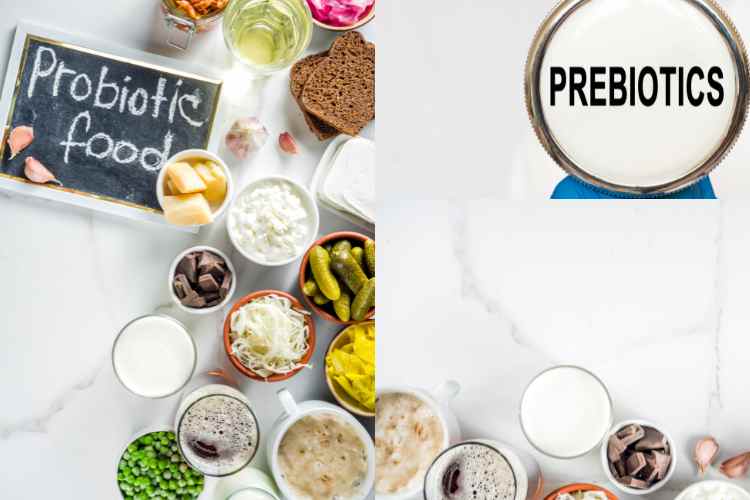The prevalence of non-widespread disease continues to increase from time to time. Although this increase was accompanied by the prevalence of widespread disease, namely Covid-19, some NCDs are still the highest cause of death, such as stroke, Ischemic Heart disease, and Diabetes Mellitus. In addition, cancer, kidney failure, hypertension, and obesity are catastrophic diseases that are difficult to eradicate despite the changing trends.
The widespread disease that has recently appeared. The good news, this is a disease that can be prevented with preventive action such as a healthier lifestyle, in a way.
Periodic health checks, eliminate cigarette smoke, actively engage in physical activity, have a healthy and balanced diet, adequate rest, and manage stress. The prevalence of non-widespread at a young age near 20-49 years can be controlled growth.
Balancing Intestinal Germs and Non-Communicable Diseases
One of the recommended by the Ministry of Health is maintaining a healthy and balanced diet, one of which is related to a diet in maintaining a balance of intestinal bacteria. Humans have 100 trillion germ cells equivalent to 1-2 kilograms of body weight, 70% of which are located in the digestive tract, especially the small intestine and large intestine. the signals given by the microbiota affect the functioning of the human body. If the composition of good germs is more than pathogenic germs to disease.
Type 2 diabetes mellitus, allergies, colon cancer, cardiovascular disease, and hepatic encephalopathy can be prevented. This is supported by a comparison of the microbiota in the digestive tract of people with diabetes and those who don’t, and there is a correlation between the composition of the microbiota and obesity. This method of balancing intestinal bacteria will be easier to do if we understand well what prebiotics and probiotics are.
Benefits of Prebiotics and Probiotics
Probiotics are live bacteria found in the human gut, certain foods, and supplements like such as Lactobacillus and Bifidobacterium. On the other hand, prebiotics is foods that are difficult to digest (usually high-fiber foods) which serve as food for the good bacteria in the human body so that their numbers are always maintained. Simply put, prebiotics are food for probiotics so they can develop properly and probiotics can not only prevent the formation of non-widespread diseases, namely: preventing skin diseases, such as eczema, maintaining the health of the urinary tract and female area, preventing allergies, colds, and upper respiratory tract inflammation, maintaining oral health, in addition to protecting the health of the system nerves. Another supplement to look into is Bio Complete 3 by Gundry MD it is a Prebiotic, probiotic and postbiotic all in one.
Food Sources That Have Prebiotics and Probiotics
Probiotics are contained in fermented foods which in their manufacture involve bacteria such as Bacillus, Lactobacillus, Streptococcus, Lactococcus, and others. Sources of probiotics that we can find every day include yogurt, kefir, miso, kimchi, pickles, kombucha, natto, cheddar cheese, mozzarella, and cottage cheese. Apart from food, there are also supplement products such as Lacto-B, Probiokids, Probiotin, Probiotim, and a combination of prebiotics and probiotics called symbiotics.
On the other hand, prebiotics comes from high-fiber foods, namely vegetables, fruit, and whole grains. Some types of food that have a significant prebiotic content include apples, bananas, various berries, garlic, onions, leeks, asparagus, green vegetables, tomatoes, soybeans, barley (barley), wheat and oats, seeds hemp, flaxseed, seaweed.
Guide to Consuming Probiotics
Consuming probiotics that have germs must be limited according to needs. On the other hand, for prebiotics, consumption can be more flexible because fruits and vegetables are relatively comfortable for healthy people’s bodies. The recommended consumption of probiotics for aged people is 5-20 billion CFU per day. Some foods have the following germs: yogurt: 4.8-9.50 billion CFU/mL, kefir: 10 billion CFU/mL, probiotic supplements: 48.2 billion CFU/mL, kombucha: 5,000-500,000 CFU/mL. Probiotic products on the market usually have fewer colonies of bacteria, so products like yogurt, kefir, or kombucha are used every day. On the other hand, for supplements, you must match the stated dosage or according to expert advice. Consuming probiotics should also be reviewed if when consuming it causes a response in the body such as gas accumulation, flatulence, hemorrhoids, decreased appetite, change in stool consistency, to an allergic response.


